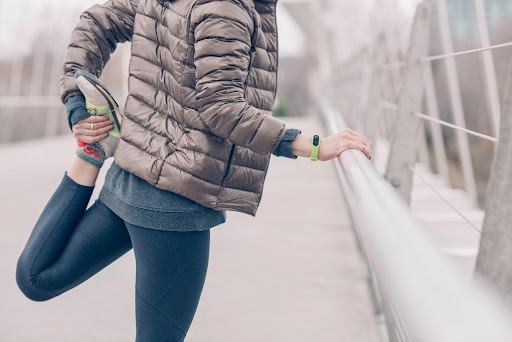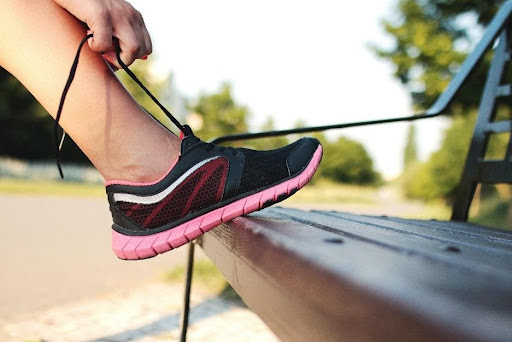Long Distance Running Gear
Nowadays there is lots of gear available for runners. However, realistically for racing long distance, all you need is a vest, shorts and a pair of spikes, trainers or racing flats for racing.
In addition to this some warm clothing such as sweatshirts and tracksuits are needed for the warm-up and down. Trainers should be worn during warm ups and warm downs before changing into your racing footwear just prior to the race.
For training, many long distance runners will wear a good pair of trainers for their steady runs and warm-up and warm downs. Although, generally, you get what you pay for, it is certainly not necessary to spend a fortune on them. Pick a pair which are comfortable and have good cushioning and supports. If you are prone to injury - getting advice on trainers may be useful as some are designed for those who either over or under pronate.

Photo Stretching
For the sessions themselves, often runners will wear track spikes for shorter quicker sessions on the track, or cross country spikes for grass/hill sessions during winter. Cross country spikes tend to be more supportive than track spikes and a little more heavy duty so they can cope with mud and rain. But, it is not necessary to have a pair of both, as long as you choose the correct spike length for the terrain you are training on (grass or track) you can train in either spike type.
For longer, more endurance based sessions, often athletes will have a pair of running flats they can wear. Flats are much lighter than normal trainers but less supportive, allowing you to run quicker than in a normal trainer. They do provide slightly more support than a running spike and are also kinder on the legs and don’t lead to as much stiffness the following day! Runners may also wear these flats during longer track races such as the 10000m as they provide more support over the 25 laps and, unless the track is wet and slippery, wearing spikes does not benefit you as much over the longer distances.

Photo Tying shoelaces
But, the most important thing is that you are comfortable in the shoes you decide to train and race in as no one wants to run miles and miles in ill-fitting, uncomfortable shoes!
